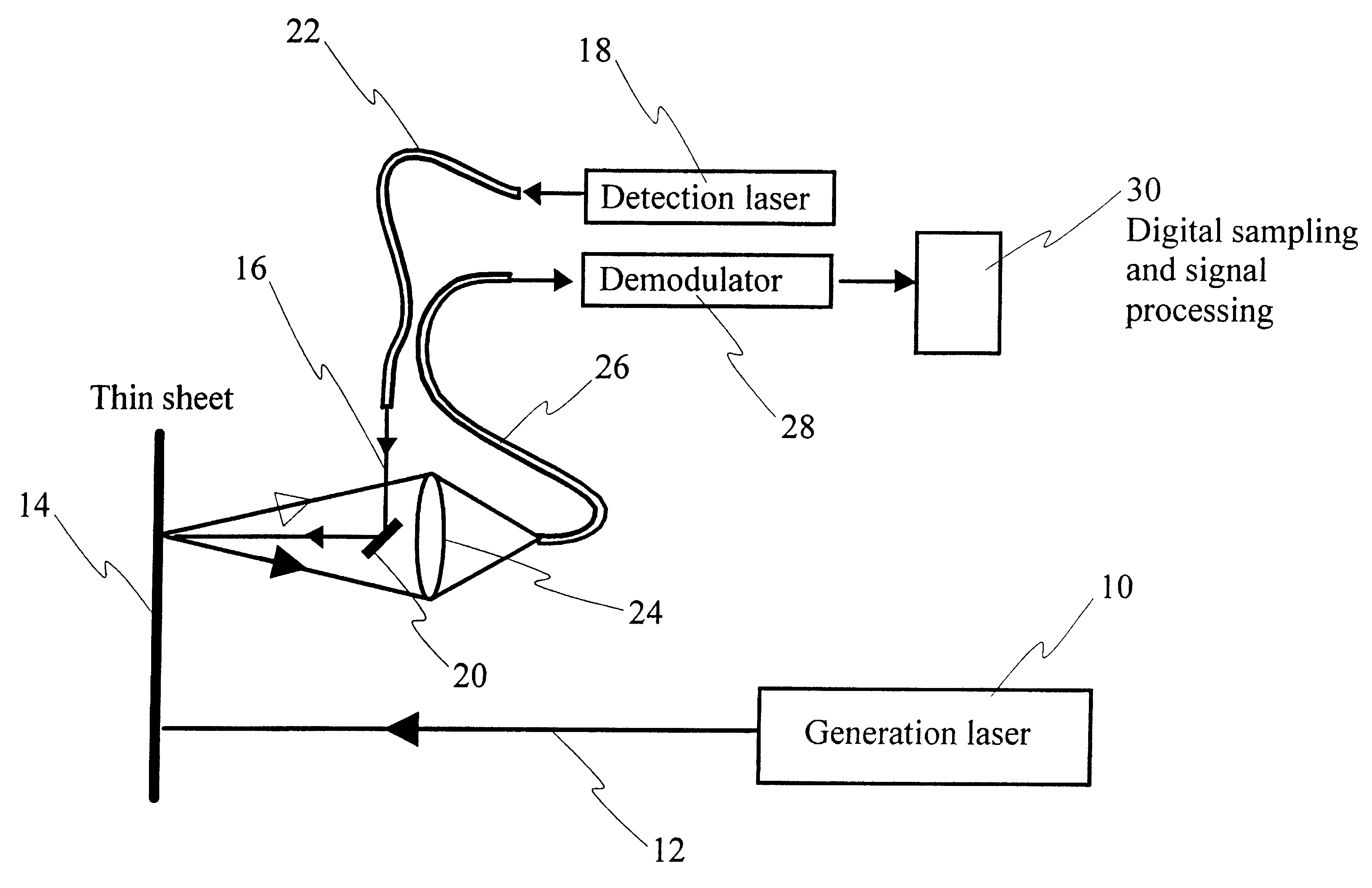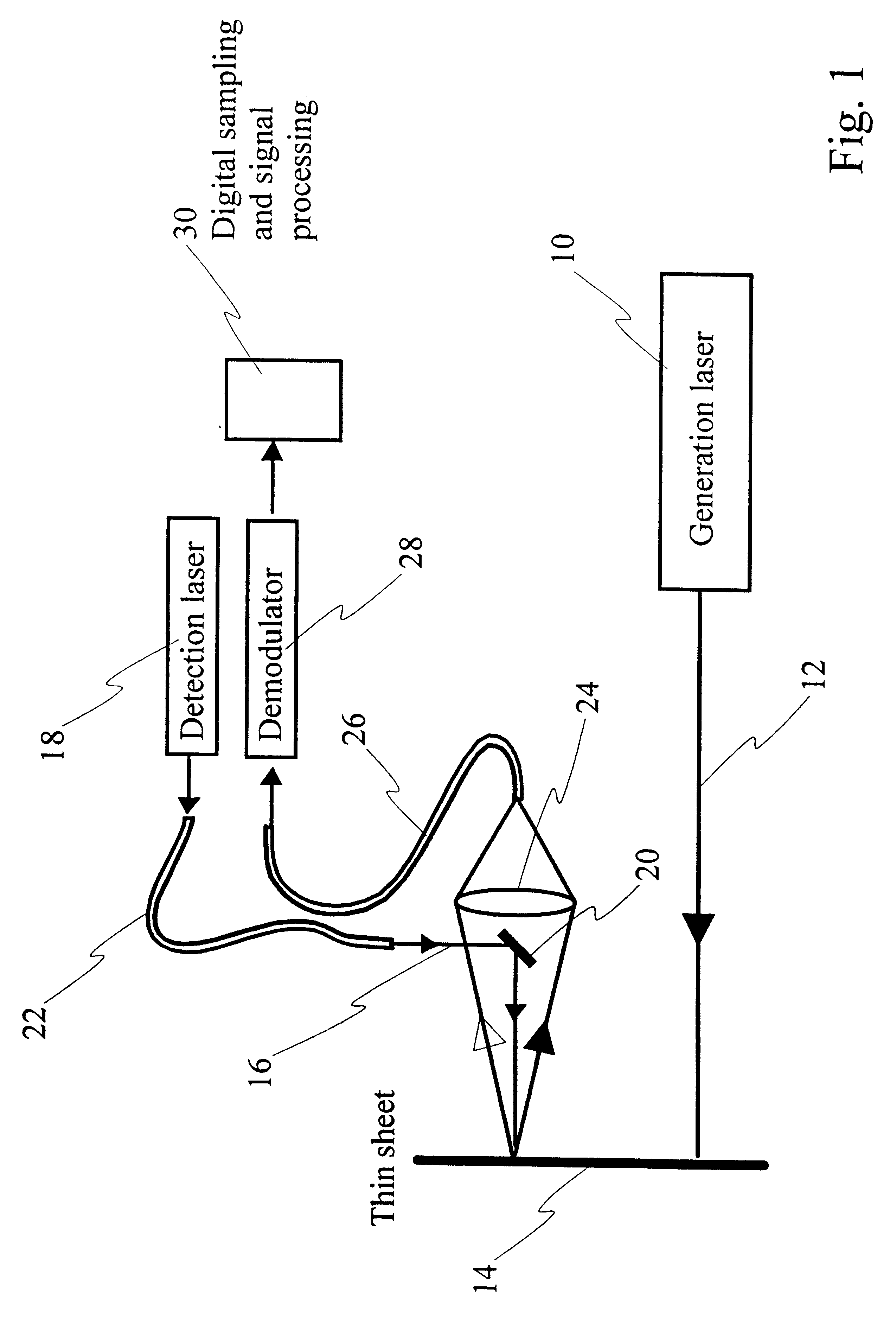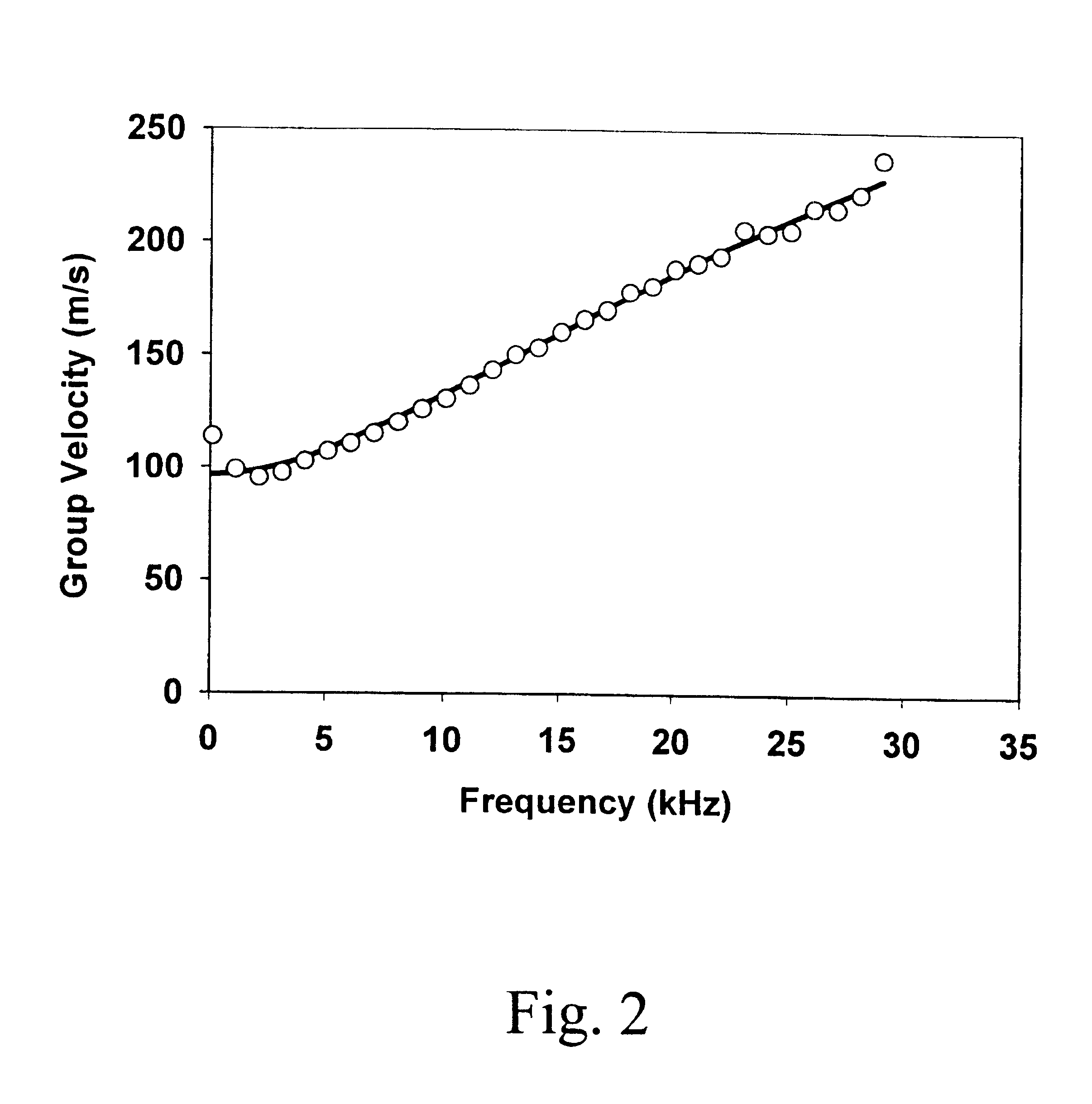Laser-ultrasonic measurement of elastic properties of a thin sheet and of tension applied thereon
a thin sheet and elastic property technology, applied in the direction of force/torque/work measurement, instruments, specific gravity measurement, etc., can solve the problems of prohibitive characteristics, local tension peak cannot be measured, and sensors that do not meet the requirements of industry to measure tension
- Summary
- Abstract
- Description
- Claims
- Application Information
AI Technical Summary
Problems solved by technology
Method used
Image
Examples
first embodiment
FIG. 1 shows a first embodiment according to the invention in which a beam 12 from a laser 10 is sent onto a moving thin sheet 14 and generates sonic and ultrasonic waves propagating throughout the sheet. This embodiment, as it will be explained below, is particularly appropriate for the measurement of the tension applied to the sheet. Generation is based on a thermoelastic mechanism: laser light is absorbed by the sheet, absorbed energy produces a transient heat source, which in turn, by thermal expansion, produces transient forces at the source of the launched acoustic waves. The types of waves launched are plate waves, essentially the anti-symmetric wave A.sub.o and the symmetric wave S.sub.o, and a longitudinal bulk wave propagating through the thickness of the sheet. A.sub.o and S.sub.o are dispersive waves i.e. their velocities (phase or group velocities) are frequency dependent. At low frequencies S.sub.o is practically non-dispersive and is essentially an extensional wave ha...
second embodiment
In a second embodiment shown in FIG. 3, the light scattered off the thin sheet is collected at an oblique incidence. In this embodiment, both the out-of-plane and the in-plane sonic and ultrasonic displacements are measured. The in-plane ultrasonic and sonic displacements are related to the S.sub.o Lamb wave mode of the sheet. Since the distance between the generation and detection spots is known the phase and group velocities of the S.sub.o mode can be obtained from the time delay between generation and detection. The in-plane stiffness or Young modulus of the sheet can be derived from these measurements. More precisely, in the case of paper, the tensile stiffness index (TSI) in a given direction (defined as the square of the acoustic velocity in this direction) is obtained from these measurements. Note that it is possible to detect simultaneously the two waves A.sub.o and S.sub.o waves because they have very different velocities and S.sub.o actually arrives much earlier than A.sub...
third embodiment
In a third embodiment shown in FIG. 4, the detection laser impinges on the sheet at an oblique incidence and the light scattered off the thin sheet is collected along the same oblique incidence. In this embodiment, both the out-of-plane and the in-plane sonic and ultrasonic displacements are also measured. In this embodiment the sensitivity to in-plane displacement is doubled compared to the embodiment of FIG. 3.
Since it is of interest to measure the modulus and the tension in various directions, the detection assembly shown in FIGS. 3 and 4 can be mounted on a computer controlled rotation stage to allow the measurements of these parameters as a function of direction. In particular, in the case of paper, the variation of the TSI with direction and the direction of its maximum value, called the Tensile Stiffness Orientation parameter (TSO), can be determined in this way. An example of data obtained with this technique on a paper sheet is shown in FIG. 5. FIG. 5 actually plots the TSI...
PUM
| Property | Measurement | Unit |
|---|---|---|
| velocity | aaaaa | aaaaa |
| thickness | aaaaa | aaaaa |
| distance | aaaaa | aaaaa |
Abstract
Description
Claims
Application Information
 Login to View More
Login to View More - R&D
- Intellectual Property
- Life Sciences
- Materials
- Tech Scout
- Unparalleled Data Quality
- Higher Quality Content
- 60% Fewer Hallucinations
Browse by: Latest US Patents, China's latest patents, Technical Efficacy Thesaurus, Application Domain, Technology Topic, Popular Technical Reports.
© 2025 PatSnap. All rights reserved.Legal|Privacy policy|Modern Slavery Act Transparency Statement|Sitemap|About US| Contact US: help@patsnap.com



